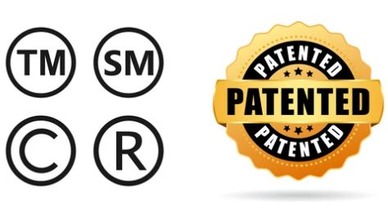Landmark Decisions on Granting Inventorship to AIs will Pave the Way to Unimaginable Possibilities
Today, we live in a wired world. As a result, constant and resolute technological advancements have immensely changed the dynamics of the relationship between technology and laws. One area of law that has been undergoing constant amendments due to changing technologies is patent laws. The recent years have observed a stark increase in the use of AI systems in various industries. AIs have time and again fuelled innovation, technical solutions and have made standards of living significantly better for the human population. However, how are patent laws and AI interconnected? For one, there exists no clear-cut definition of AIs in any patent laws. AIs are considered a subset of computer sciences. This interpretation is rather ambiguous because AIs fall in a grey area and are far from mere computer programs. Until recently, AIs are also capable of thinking for themselves. Thus, it would be right to say that AIs are ever-evolving and can think of new inventions without any human input per se. Subsequently, this could pave the way to drastic reformations in patent laws to accommodate AIs and AI inventions.
[Image Source: gettyimages]
One such AI that has caught the attention of many in the technology and legal fraternity is the ‘Device for the Autonomous Bootstrapping of Unified Sentience’ (DABUS). DABUS is the brainchild of Dr. Stephen Thaler and is capable of simulating ‘human brainstorming’ to create inventions. DABUS is also considered as the creativity machine that could produce inventions by critically scrutinizing input data and learning from it (also referred to as machine learning). In sum, DABUS is an AI that is capable of creating inventions with the help of machine learning.
Last year, DABUS created a “food container based on fractal geometry” with inputs from Dr. Thaler as well as Ryan Abbott from the University of Surrey. Thaler decided to list DABUS as the inventor in the patent application for the food container which was consequently filed in several countries including the US, Europe, Australia, and South Africa. However, the USPTO and EPO rejected the patent applications wherein DABUS was listed as the inventor. It was contended that inventorship can only be attributed to inventors who are natural persons. Furthermore, it was argued that AIs are not capable of being attributed with a legal personality and hence, the position of inventorship, which comes with legal rights, cannot be attributed to an AI. Lastly, it was explained that ‘mental conception’ plays a crucial role when it comes to patent applications. Unlike human beings, AIs are not capable of mental conception and hence, the position of inventorship cannot be granted to an AI. However, what proved to be ground-breaking was the decisions taken by Australia and South Africa with respect to the DABUS application.
Recently, the Federal Court of Australia adjudicated that DABUS can be attributed with the title of inventorship as per the Australians Patents Act. This landmark judgment was delivered by Hon’ble Justice Beach who opined that it would be a fallacy to contend that an inventor can only be a human being. Instead, an inventor could also be an artificial intelligence system. However, this comes with an exception. The exception is such that the AI cannot be considered as the owner, controller, or patentee of the patentable invention. The Court took several arguments into consideration that served as a basis for delivering the judgment:
- It was noted by the Court that no provision in the Australian patent laws expressly suggests discrediting an AI as an inventor. Moreover, it was noted that Australian patent laws do not compulsorily require the existence of a human author.
- Justice Beach then proceeded to analyze the term ‘inventor’. It was noted by him that ‘inventor’ can be considered as an agent noun. This means that the suffix ‘or’ or ‘er’ would indicate that the noun describes the agent here and not the action. In sum, it was noted that the agent should be identified and taken into consideration. Here, the agent that invented the patentable invention was DABUS, and hence, it should be considered as the inventor.
- Justice Beach then took the essence of the Australian Patent Act into consideration. A recently inserted clause states that: “The object of this Act is to provide a patent system in Australia that promotes economic wellbeing through technological innovation and the transfer and dissemination of technology. In doing so, the patent system balances over time the interests of producers, owners, and users of technology and the public.” For the Court, this implied that irrespective of the technical personality of the inventor here, it is important that all innovations that may promote economic wellbeing must be fostered and encouraged.
- It was opined by Justice Beach that the term “inventor” should be capable of evolution with changing times. He wrote “There is a synergy if not asymmetry in both being flexibly treated. Indeed, it makes little sense to be flexible about one and not the other. Tension is created if you give flexibility to “manner of manufacture” and then restrict “inventor”. You would be recognizing an otherwise patentable invention and then saying that as there is no inventor it cannot be patented.”
- Lastly, it was noted that the Australian Patents Act gives importance to the “inventive step” in an application and not the compulsory requirement of an inventor. It was observed that ss7(2) and 18(1) of the Act do not mandate the requirement of an inventor. Moreover, the Court did not identify the relevance of s40 of the Act wherein it is not a mandate that the inventor should have a legal personality.
This Australian Court judgment was a second win for DABUS. Prior to this, South Africa’s patent office had granted the patent with DABUS as the inventor. Unlike the Australian Federal Court judgment, the South Africa Patent office has not justified their go-ahead with further reasons or elucidations. The patent was merely published in the South African Patent Journal in July 2021. However, on perusing several patent reforms in South Africa, experts have speculated that the decision was taken with an objective to solve the country’s social-economic problems.
Both the decisions were met with mixed responses from several global communities. Some contended that the decision promotes the expansion of patent laws which could eventually contribute to the development of several countries that are in dire need of the same. On the other hand, many believe that the decision was due to the lack of strong patent laws and was not well throughout. Nevertheless, in all, both the landmark decisions will in all their likeliness, pave the way to unimaginable possibilities.
Author: Sanjana, a BBA LLB student of Symbiosis Law School (Hyderabad), in case of any queries please contact/write back IP And Legal Filings at support@ipandlegalfilings.com.




